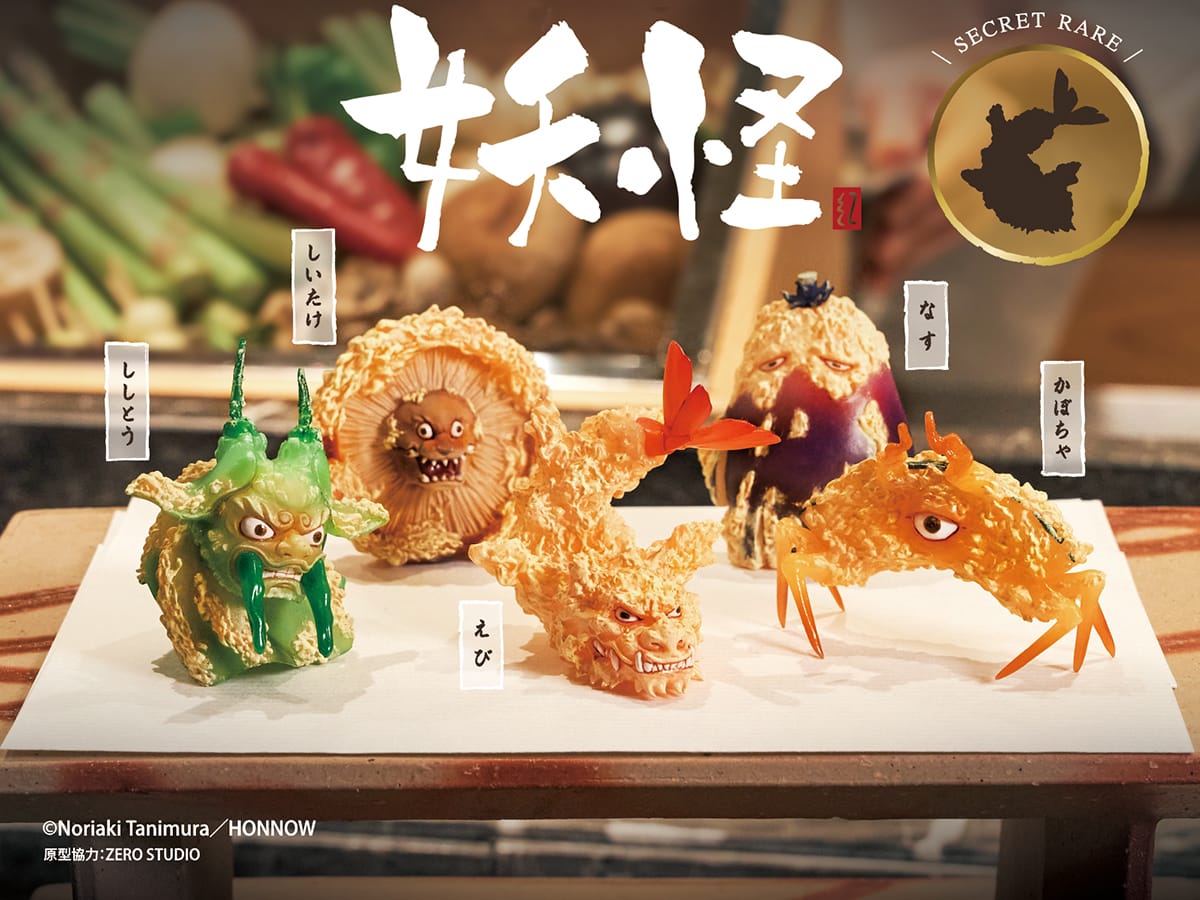
Source: ©︎ Qualia Co., Ltd. | ©︎Noriaki Tanimura / HONNOW - used with permission
Tempura turns into yōkai monsters in the first of Qualia’s “Con/tempura/ry Art” capsule toy series
- Tags:
- capsule toy / Figure / mascot figure / Mononoke / Monster / Noriaki Tanimura / Qualia / Yokai
Related Article
-
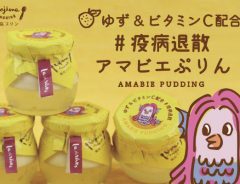
Japanese anti-plague demon Amabie now has its own pudding
-
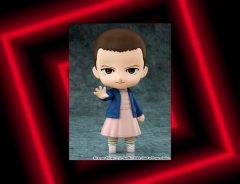
Eleven from “Stranger Things” gets her own Nendoroid; waffle box, blonde wig included
-

DJ Steve Aoki does his signature jump in new Q posket collectible figure
-
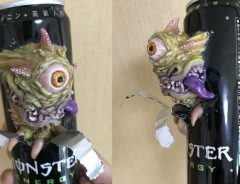
Japanese Figure Artist Shows How Monster Energy Drinks Get Their Claw Marks
-
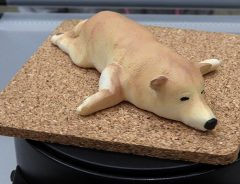
These Shiba Inu Figures Will Help You Through The Hot Summer Months
-
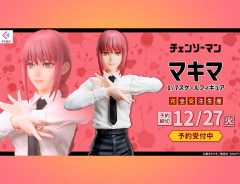
Makima from Chainsaw Man strikes her iconic pose in gorgeous new figure


Starting on December 22nd 2021, you'll be seeing a very special toy in Japanese capsule dispensers nationwide. Introducing the てんぷら妖怪 "Tempura Yōkai" mascot figure series from Qualia Co., Ltd.
Reproduced with permission from © Qualia Co., Ltd.
Qualia's Con/tempura/ry Art series represents a collaboration with Noriaki Tanimura 谷村紀明, an artist and designer known for creating mononoke and yōkai, Japanese monsters and spirits. This is the first capsule toy giving form to his 2019 work "Tempura Yōkai," which puts a conceptual twist on the creation of tempura. Just like each ingredient, when battered and fried, transforms into something more delicious than its original form, these yōkai have undergone a mysterious transformation of their own!
Reproduced with permission from © Qualia Co., Ltd.
Five of these whimsical tempura monsters were carefully chosen to be sculpted by ZERO STUDIO, a talented sculpting team that has won several international sculpting competitions.
The lineup includes shrimp, eggplant, kabocha pumpkin, shishito peppers, shiitake mushrooms, and a secret one, for a total of six types. In order to fully express the crispy texture of the tempura, a meticulous coloring process was applied to the transparent resin, resulting in a figure-like finish which is unusual for a capsule toy. The batter is so realistic that it makes you want to eat tempura, and the ingredients you can glimpse through it look even fresher than the real thing! It's truly con-tempura-ry art!
Each figure can stand on its own, so you can display them on your kitchen counter, table, or desk!
Shrimp えび
Looking like a dragon, Shrimp has amazing detail in the batter, designed and painted to make it look extra crispy and fresh, and the tail is a separately designed part, created with translucent material to give it a more realistic look.
Reproduced with permission from © Qualia Co., Ltd.
Shishito pepper ししとう
Shishito pepper is a small, finger-long, slender, and thin-walled mildly spicy East Asian pepper variety of the species Capsicum annuum.
monochrome | © PIXTA
It is written with the kanji 獅子唐, literally "lion pepper," because the tip looks like a lion's head, so it only makes sense that the yōkai version would be a lion. Its horns and ears are cleverly expressed as two peppers and it also has peppers for tusks. The designers went out of their way to strike the right balance between the fresh green of the pepper and the batter parts.
Reproduced with permission from © Qualia Co., Ltd.
Kabocha pumpkin かぼちゃ
To make tempura, kabocha is usually quartered then cut into thin wedges before being battered and fried, and this yōkai takes after that shape. Looking a bit like an alien insect or crab with one single eye staring at you in the center, it can also stand on its crab-like feet!
Reproduced with permission from © Qualia Co., Ltd.
Shiitake mushroom しいたけ
If you only look at it from its back, this yōkai is indistinguishable from a shiitake tempura. In Japanese cuisine, shiitake caps are usually cut to create a star pattern to allow seasonings to seep in and to allow it to cook more evenly. When it comes to tempura, it's common practice to only coat the gills with batter and leave the cap uncoated.
RUNA | © PIXTA
But when you turn this yōkai over to see its gills, you'll see a frightful monster face in the middle!
Reproduced with permission from © Qualia Co., Ltd.
Japanese eggplant なす
Perhaps this one was inspired by the ぬっぺっぽう nuppeppō (see below) seen in yōkai illustrated books from the Edo period.
Toriyama Sekien (鳥山石燕, Japanese, *1712, †1788), Public domain, via Wikimedia Commons
From its portly shape to the light to dark purple gradation of its skin, to the little stem "hat" on its head, it's obviously Japanese eggplant tempura while also conveying an unmistakable yōkai presence.
Reproduced with permission from © Qualia Co., Ltd.
You can admire the remarkable craftsmanship that went into each one in this video:
At only 400 yen apiece, these Tempura Yōkai mascot figures are a monster of a deal! And if you're lucky, you'll find the special secret yōkai when you buy one. Look for them in Japanese capsule toy dispensers nationwide from December 22nd!
A special commercial will be released in the near future on the official website, so don't miss it!